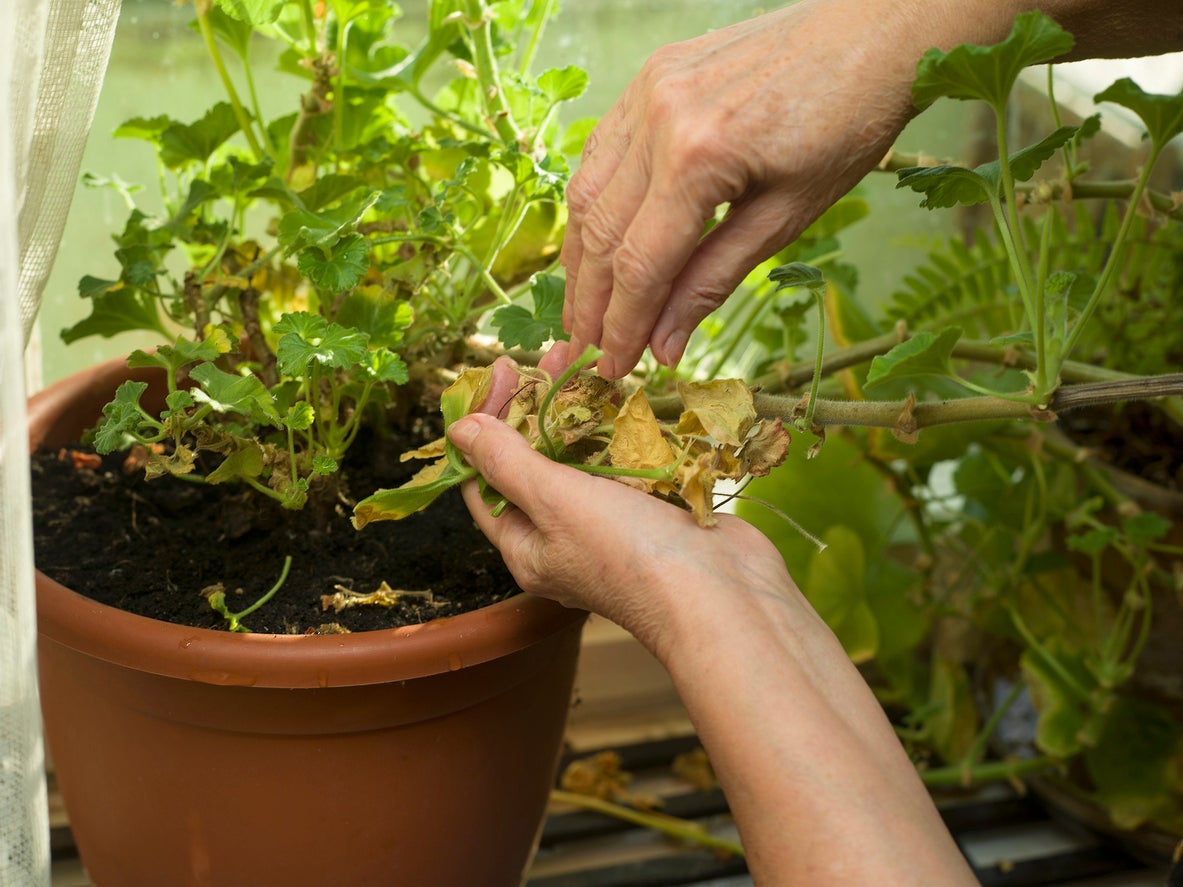What Is Deadleafing: How And When To Remove Leaves From Plants


Keeping flower beds, evergreens, and perennial plantings looking their best can be quite the undertaking. While establishing a routine of irrigation and fertilization is important, many home gardeners may overlook the process of maintaining the appearance of plants as the season progresses. Plant care routines such as deadleafing will help keep your flower beds looking lush and vibrant throughout the entire growing season.
Deadleafing vs. Deadheading
Many gardeners are familiar with the process of deadheading, but deadleafing garden plants may be less known. Just as deadheading refers to the removal of old or spent flower blooms, deadleafing refers to the removal of dead or dried leaves from the plant.
When to Remove Leaves - Is Deadleafing Necessary?
For many flowering plants, the process of plant regrowth is constant. Depending upon the time in the growing season, plant leaves will naturally turn brown and die back to the ground or to the plant’s stem.
Browning and dying back in plants can also be the result of environmental or disease stress. For this reason, it will be important to monitor plants to ensure that a bigger issue is not the cause.
When done correctly, the process of deadleafing is beneficial to plants. Removing decaying plant debris can decrease the likelihood of plant disease, as well as help keep a neat and tidy appearance to the planting.
Refreshing flower beds or container plants by deadleafing can be done quickly throughout and at the end or beginning of the growing season. Deadleafing plants is especially important in the spring in order to remove any damage caused by a long and cold winter.
How to Deadleaf Plants
To begin the process of deadleafing, select a plant with foliage that has started to brown or has completely died back. Remove the dead leaves from the plant. While some leaves may need to be cut back to the base of the plant at ground level, other plants may not require such drastic action. Sometimes, carefully pulling dead leaves with your hands is enough, especially with otherwise healthy plants.
Sign up for the Gardening Know How newsletter today and receive a free copy of our e-book "How to Grow Delicious Tomatoes".
When deadleafing, be certain not to remove any stems from the plant. Removal of dead stems from plants should be included in normal pruning procedures depending upon the variety.
When removing leaves from diseased looking plants, always make certain to use a clean pair of garden shears. This will help to reduce the spread of disease within your planting. Once the plants have been deadleaved, remove all dead plant matter from the garden.

Tonya Barnett has been gardening for 13 years. Flowers are her passion. She has transformed her backyard into a cut flower garden, which she regularly chronicles on her YouTube channel http://www.youtube.com/@tonyawiththeflowers.